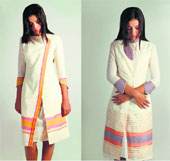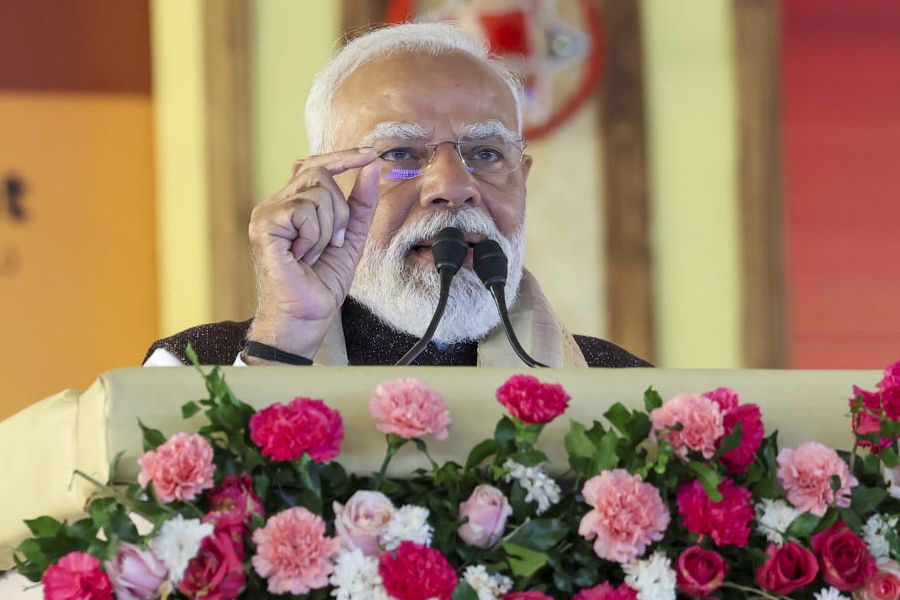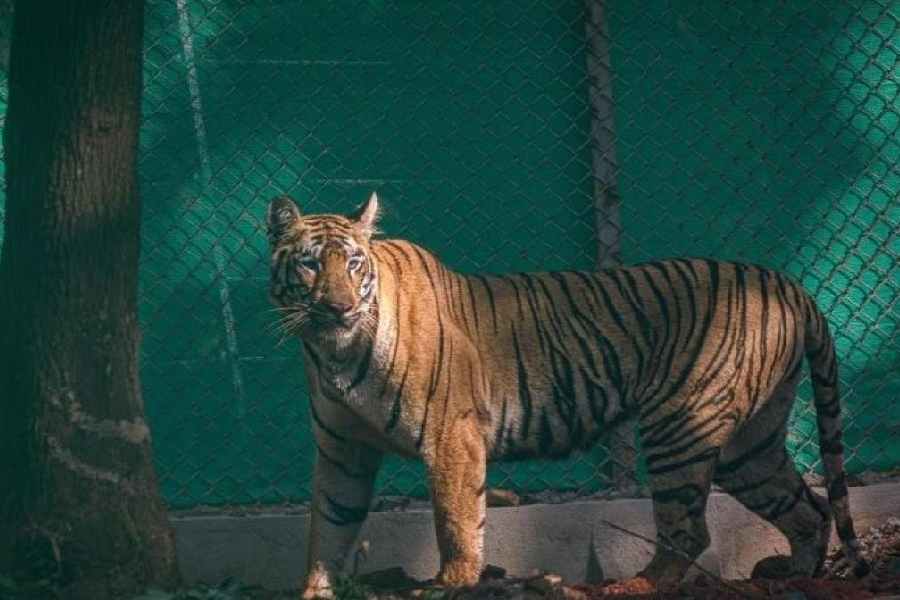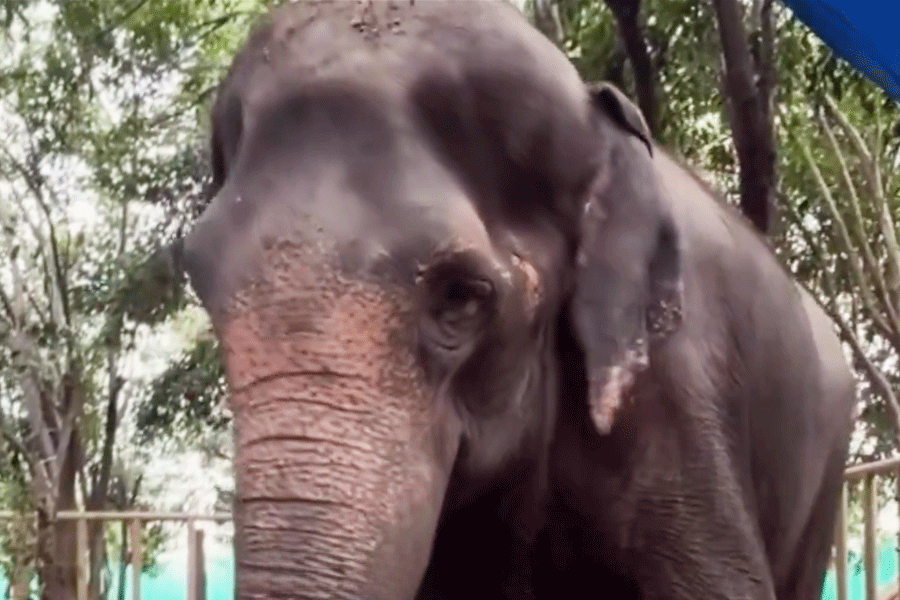 |
 |
| Rahul Mishra • Background: BSc from Kanpur, doing Masters in Apparel Design and Merchandising, NID |
It could be a life-changing event for rookie fashion designer Deepti Toor. The 21-year-old who’s studying at the National Institute of Design (NID), Ahmedabad, has just struck the fashion industry’s equivalent of a jackpot. She’s one of six buzzing-with-talent youngsters who will be stepping forward alongside the veterans and showcasing their creations at the Lakm? India Fashion Week (LFW) in Mumbai next week.
For Toor, it’s meant dropping out from a final-year project with a Delhi export house and racing to get her line together. Her sudden good fortune has left her parents speechless with amazement. Says Deepti, “I have to make four more garments in just 10 days. Normally, I’d stressed out but this time, I’m really enjoying the process.”
Or, look at another NID student, Rahul Mishra, who has fought against the odds to become a fashion designer. Rahul’s father, a doctor, vetoed his initial attempts to become a designer and forced him to do a BSc in Kanpur. But Rahul spent more time at the National Institute of Fashion Technology (NIFT) in Delhi than attending physics lectures back home until his father finally gave in.
Will Deepti, Rahul and the four other wet-behind-the-ears newcomers ? Samar Firdos, Bhawna Rao, Leena Wadhwa and Swapnil Shinde ? make the cut? They’ve certainly got a shot at instant stardom, having been chosen as the Gen Next designers at one of the country’s biggest design extravaganzas. This is the first time that the category has been introduced. And they could even become stars like Shahzad Kalim, the youngster, who came from Bihar and conquered the hearts of fashionistas around the country.
 |
| Swapnil shinde • Background: Fashion Design from NIFT Mumbai, Diploma in Fashion Styling from Instituto de Moga Burgo, Milan |
Certainly, all eyes will be on them at the LFW. The Gen Next category is hugely popular at fashion weeks internationally, and IMG, which runs the concept in Australia, mooted it for India as well. Says Anil Chopra, vice-president, Lakm? Lever, “They [the Gen Next designers] create a huge buzz as people are always looking for new talent.”
Mind you, these six youngsters have had a tough time getting this far. They were selected from 30-odd competitors by the LFW’s advisory board, which included designers Wendell Rodricks, Narendra Kumar and Ritu Beri, buyers Sangita Sinh Kathiwada of Melange and Pradeep Hirani of Kimaya, and media representatives.
Adds Kathiwada, “There’s something fresh and crazy about young designers as they come without fear or baggage. That was the criterion ? we wanted to see something that hadn’t been done before.”
 |
 |
Samar Firdos • Background: Fashion Design from NIFT Chennai; doing Masters in Textiles at NID |
The youngsters definitely aren’t short of chutzpah. Some have already figured that the LFW platform is a great opportunity to launch their own labels. “Normally, people work for three-four years and then think of launching their own labels. But the Gen Next category is a great opportunity to launch your own label,” says 21-year-old Wadhwa, who is unveiling her label, Style Epitome at LFW and who graduated from the Pearl Academy of Fashion in December.
That’s pretty ambitious considering that some of these youngsters don’t really have any infrastructure in place. But again, that’s not stopping them from pushing the envelope.
Samar Firdos
Take Samar Firdos, 24, who is pursuing his masters in textiles at NID, having done a diploma in fashion design at NIFT Chennai. For the LFW? Firdos, whose theme is “highbrow organic”, has given a contemporary twist to the country’s rich textile heritage. The result is a brand new fabric made from leather and silk that Firdos is even patenting.
The silk and leather combination reveals the influences on the designer. Having studied at NIFT Chennai, he worked with leather workers there. And he grew up in the silk town of Bhagalpur, Bihar, where his family runs a silk export business. In fact, Firdos got weavers in Bhagalpur to weave together strips of leather and tussar silk.
 |
 |
Deepti Toor • Background: Excellence in extra-curriculars like art opened the doors to NID |
That’s not all. Firdos has even mastered the ply-split-braiding technique and made braided fabric. “I took eight months to just create this fabric,” he says. He’s also making garments from screen-printing scrap. This is the material that is spread below fabrics that are screen-printed, and that consequently carries scores of print marks. The collection is in silk as Firdos wanted to create “evening wear for the middle class but with a classy look”.
“International designers give importance to the fabric and cut. In India, the fabric gets hidden because everything is so over-embellished,” says Firdos.
So he’s used cuts that show off the fabric. The line includes single and two-piece garments in reds, blacks and earth tones with accents of gold.
Rahul Mishra
Not surprisingly, each of the Gen Next designers has a distinct fashion sensibility. Mishra and Firdos even recently joined hands and formed a design company Syu: (it means first ray of light in Sanskrit) along with two other students. But they’ve entered LFW separately and are showing separate collections. If Firdos is making “pr?t in an avant garde style”, Rahul’s focus is more functional. But while Firdos is making eveningwear, Mishra has chosen daywear.
 |
 |
Leena Wadhwa • Background: Graduated from the Pearl Academy of Fashion |
“Design is a problem-solving exercise,” says Mishra, 24, who, as winner of the Fiesta Italiana design contest, is headed on a scholarship to the Instituto Marangoni in Milan this October.
Says Mishra, “I always like to identify a market and users before I design because design has to be user-oriented while fashion revolves around current trends.” For the LFW, he has drawn inspiration from the handloom workers of Kerala, where he did research. He has zeroed in on two challenges: making weather-and-culture-appropriate clothes for tourists, and creating a market for handlooms by improving their styling.
So he has used the fine 120-count cotton, traditionally used in the settu mundu, to make reversible singles, tops and bottoms, largely in off-white accented with gold, yellow, red and orange.
What’s more, as a science student, he has leveraged the inherent properties of the fabric to ensure that it quickly absorbs perspiration and allows it to evaporate. “I have exploited this natural property by layering,” he says.
And he’s evolved a new reversible technique that he’s patenting. He has constructed each garment in such a way that the entire styling changes when it is reversed.
 |
 |
Bhawna Rao • Background: National basketball player-turned-designer |
Deepti Toor
Toor meanwhile is big on “concept-based” clothes. She has based her LFW collection on Cubism. “I’ve fused Indian fabric with Western art to create a brand new look,” she says.
Essentially a menswear designer, Toor has chosen to design evening wear for women in shades of olive green and ochre ? for LFW. She has created digital prints based on Cubist paintings, and has brought out the attributes of Cubism in the garments’ details. For instance, the multiple perspectives evident in Cubism paintings are introduced when a collar is placed at the back instead of the front of one garment.
Swapnil Shinde
Not all the designers are freshers. Take Shinde, who has worked as an in-house stylist at Kimaya and for MTV after completing a one-year diploma as fashion stylist at the Instituto de Moga Burgo in Milan. He graduated from NIFT Mumbai in 2003.
Shinde wants to make clothes that are not Indian in sensibility. His focus is on dresses and evening gowns for “red carpet events”. “India is globalising today so why should the fashion industry be left behind,” he says.
His LFW line, which is inspired by Italian and Indian architecture, reveals his love for draping and detailed pattern-making. So each garment is constructed with almost 60 pieces of fabric. Like the pink gown in raw silk and chiffon with its constructed bodice and flowing skirt embellished with sequins. The collection also includes jackets and one saree. Shinde has chosen dark colours like indigo blue and amethyst, and he favours chiffons, georgettes, taffetas and raw silk.
Bhawna Rao
Rao, who grew up in Gurgaon, too has garnered experience, having worked with Abu Jani-Sandeep Khosla after graduating from NIFT, Mumbai, last June. This January, she teamed up with Lakm? Fashion House winner Kalim to set up a workshop.
Rao’s style is funky and energetic, and her LFW line, mockingly called “Bharat ki Chick”, is inspired by ? of all things ? Indian trucks. “They have such an attitude with their bold motifs. And that’s what I want my girl to be, in-your-face,” she proclaims.
Her line of dresses, skirts, jackets and tops has a bit of everything from floral prints to geometrical accents. The silhouettes are “fitted with some flow”, and the colours are pinks, blues and greens.
Leena Wadhwa
Wadhwa’s Style Epitome will epitomises the “young” in age and attitude. For the LFW, Wadhwa is targeting women between 20 and 30. The line is based on what she calls the “go-sparty” theme, that is sportswear-inspired clubwear. “Clubwear shouldn’t only be glamorous but comfortable too. So I’ve taken the styling and detailing from sportswear,” she says.
Wadhwa has chosen fabrics like corduroy, suede and velvet. She’s made jackets, fitted pants and short skirts, all with just the right amount of embellishment. What’s more, Wadhwa, who’s just set up a workshop in Delhi, is already drawing up plans to scale up.
The LFW is only the first step in these designers’ ambitious plans, what with Rao, Wadhwa and Shinde who are launching their own labels.
Mishra and Firdos have international ambitions. And they’re not restricting themselves to fashion alone. Along with two other NID alumni (an animator and a digital design specialist), they’ve set up their own design firm.
Are these young designers disconnected from the real business of fashion? After all, the cut of the market may be quite different from the designs on the drawing board.
The Gen Next designers may be experimental but that doesn’t mean they’re not savvy. And while they know that they are up against the biggest names in the business, they’re confident of their abilities. As Shinde says, “Ultimately, it’s the buyers who matter. And if my clothes speak to them, I will have the last laugh.”











